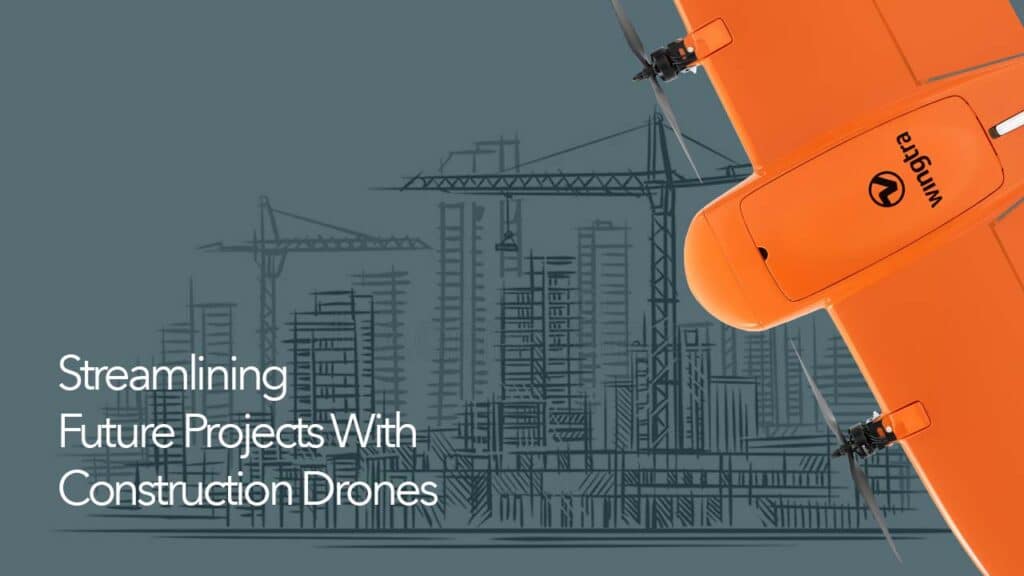Streamlining Future Projects with Construction Drones
Drones! You’ve heard about them and seen them all over the place. Drones provide endless possibilities and applications, whether flying around a room or shooting unusual aerial footage even in the field of construction.
The drone industry is rapidly expanding, and the technology offered by drones is virtually endless. They are being employed in a wide range of commercial applications, including filming for television, real estate, package delivery, weddings, and 3D mapping. According to a McKinsey & Company report, the construction industry is ripe for disruption, since building projects are taking longer than necessary and are currently running 80 percent over budget.
Since the 1990s, this has resulted in a decrease in several markets around the world, with financial returns on investments for contractors being poor and volatile. Drones in construction aren’t new, but they’re being adopted at a higher rate than ever before by construction companies. Drone usage has increased by 239% year on year, outpacing that of any other business sector (DroneDeploy, 2018). They are a useful tool because of their aerial vantage point and data collection capabilities, which provide benefits ranging from on-site safety to remote monitoring. The capabilities of drone technology have revolutionized the entire project life cycle, from conception to completion. Drones have shown to be essential in the field, whether they are employed to conduct land surveys or to follow equipment.
Construction Drones are outfitted with a variety of functions to aid in the collection of critical data on construction sites, such as cameras, GPS units, temperature sensors, and infrared sensors. The data they collect can be transmitted to a computer via drone software, allowing users to evaluate, interpret, and arrange the data. These features increase project management efficiency and allow for more thorough inspections. Drones can boost efficiency, save expenses, and streamline workflow due to their real-time data capturing and unique aerial advantage. The ability to acquire exact visual data of a site faster and cheaper than using terrestrial techniques or manned aircrafts is the first and obvious benefit of drones in the construction sector. But that’s only one of the many advantages drones can provide to construction firms. Below are a few instances of how drones are employed in the construction industry.
Topographic Mapping and Land Surveys.
When planning complex large-scale building projects, topographic maps become very essential. They can uncover costly flaws in designs that aren’t suited to specific terrain. Although topographic maps are useful, they are costly and time-consuming to create. As a result, maps are not always updated at the start of a project. Drones can significantly reduce the time required visualizing a site’s topography due to their capacity to map large areas of land. This aids in keeping the project on track and within budget, as well as ensuring accuracy before it commences. This data can be used to determine feasibility and assist with design. Additionally, the high-resolution photographs obtained by drones may be turned into 3D models, allowing the construction crew to pinpoint issues during pre-construction and spot scope errors, hence saving time and money.
Tracking of Equipment.
Losing track of where equipment is situated at each job site is an issue that practically every project manager encounters. With the use of a drone, managers can make flyovers and instantly assess equipment and where they should be. They can also swiftly detect whether a piece of equipment that should be terminated is still on-site, avoiding costly extension fees. Equipment malfunctions are another common issue. Drones’ recording functionality could be used to identify issues remotely and provide visual representations that aid in communicating those issues. Operators can easily send recorded data to repair technicians at equipment rental companies for quicker and more accurate diagnostics before they even make it to the worksite.
Remote Monitoring and Progress Reports.
Another advantage of construction drones is the increased visibility they may provide to clients. Drones can create stunning aerial views and provide clients with a better understanding of the project’s progress, especially when they are unable to physically visit the site. This gives them peace of mind that their money is being spent wisely. Drones can improve internal team collaboration by transmitting information to connected software during flyovers, in addition to client communications. Design teams, engineers, construction managers, employees, and owners can all view the data at the same time to track the project and spot any errors. Drones can also leave a trail of documents that can be accessed later by teams.
Security Surveillance.
Having equipment stolen from a job site can be damaging at times. Losing tens of thousands of dollars dues to stolen boom lift or excavator can lead to breakdown of projects. Every year, over $300 million worth of construction equipment is stolen from job sites, according to the National Equipment Register, with fewer than 25% of it being recovered. As a result, equipment security is a critical aspect of task management. A drone operator can perform a flyover to swiftly determine whether a piece of equipment is in a safe area. They can also use the security camera to see if there are any unauthorized people on the premises. This can aid in the prevention of damage or theft, as well as the identification of any trespassers.
Personnel Safety.
Most construction companies place a high priority on worker safety. Worker fatalities are primarily caused by falls, which account for 34% of all fatalities. When collecting manual measures, workers are frequently required to climb to unstable platforms and negotiate around dangerous conditions. Drones can take the place of workers in certain scenarios, reducing the risk to construction workers on the job. Most construction companies place a high priority on worker safety. Worker fatalities are primarily caused by falls, which account for 34% of all fatalities. When taking manual measurements, workers are frequently required to climb to unstable platforms and navigate around dangerous conditions. Drones can take the place of workers in certain scenarios, reducing the risk to construction workers on the job.
Conclusion.
Drones are currently being deployed on building projects all around the world, especially in Africa. The Gauteng Department of Infrastructure Development has begun utilizing drones to monitor the construction site of the Phillip Moyo Community Health Centre (KH Plant, 2021). The drone was being deployed to collect data on the construction delay, which was expected to last 8 months. This data was used to discover inefficiencies and determine the cause of the delay to avoid further delays and even to streamline future construction projects. According to Marius Hough, the director of operations at Dronezone in South Africa, African Construction firms can benefit in a big way from drones. “Drone technology can be used in a variety of applications around building sites, from the monitoring of progress to inspections, to security patrols, to delivery of small key items,” he said.
Reference
How Drones Are Affecting Construction in Africa, KH Plant, 8 Nov. 2021, www.khplant.co.za
The Rise of Drones in Construction, DroneDeploy, Accessed 14 Apr. 2022, www.dronedeploy.com
Stannard, Liam. 6 Ways Drones in Construction Are Changing the Industry, BigRentz, 25 Apr. 2022, www.bigrentz.com.
Agarwal, R., Chandrasekaran, S., & Sridhar, M. (2020, October 20). Imagining construction’s digital future. McKinsey & Company. Retrieved April 26, 2022, www.mckinsey.com



